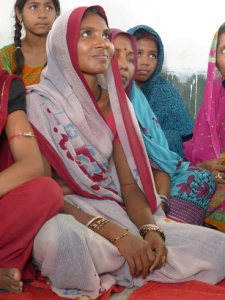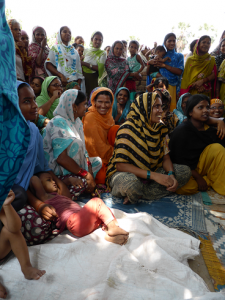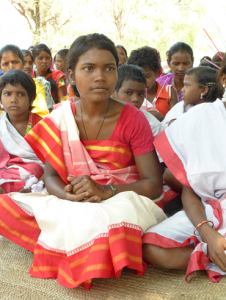The Problem
Challenges to Menstrual Hygiene Management

With over 200 million women and girls in India unaware of safe menstrual hygiene practices, women in the country are unable to lead fulfilling and dignified lives. They are faced with challenges of poor reproductive and sexual health.
The links between poor menstrual hygiene and economic, health and other developmental indicators are well established:
- Incidence of Reproductive Tract Infections (RTI) is 70 percent more common among women who use unhygienic materials during menstruation (Dasra, 2015).
- Lack of access to appropriate sanitation facilities in schools exacerbates the problem of menstrual hygiene, leading to 23 percent girls across the country to drop out of schools. (Dasra, 2015) This severely impairs their education and personal development.
- In total, a woman spends an average of six to seven years of her life menstruating (Crofts, 2012). Poor menstrual hygiene management in a woman’s productive years carries significant impacts on her ability to engage in economic activity.
- Discriminatory practices within families structured around the perceived impurity of menstruation restricts the mobility of girls and women. Exclusion from physical spaces, enforced absenteeism from work and school, and nutritional neglect contribute to a wider culture of discrimination (Garg, Goyal, & Gupta, 2012).
Lack of Awareness
More than 70 percent of adolescent girls and women in India lack awareness about menstruation before the onset of menarche. The first experiences with menstruation among most adolescent girls are largely associated with shame, fear, and agony (FSG, 2016). Below are some troubling realities of menstrual hygiene awareness in India:
- Little or no understanding of menstrual management: In a study conducted in Uttar Pradesh by UNICEF (2012), 86 percent of the girls reported that they were completely unprepared for their first menstrual period, while a majority of the girls were unaware of how to maintain personal hygiene during menstruation.
- No knowledge of what is physiologically normal and abnormal in the course of their period: Menstrual dysfunctions are commonly dismissed away by women as a regular and necessary part of the monthly period, resulting in long-term medical neglect.
- Misinformation and taboos: Mothers and female members of the family are the first point of contact for information on menstrual hygiene management, but little information on sanitary practice is passed on to young girls. Instead, superstitions and taboos are constantly exchanged across these personal networks, such as the belief that any man who sees a used menstrual cloth risks becoming blind, or the superstition that if a dog digs out a used menstrual cloth buried in the ground, the woman will become infertile (Garg, Goyal, & Gupta, 2012) – lending women to associate their bodies with curse and impurity.

Lack of availability of sanitary materials

The challenges posed to adoption of appropriate sanitary materials for menstrual hygiene management are three-fold: lack of awareness of best sanitary practices, lack of access to sanitary products, and affordability barriers.
Market studies by A. C. Nielsen and Plan India (2010) suggest that only 2-3 percent women living in rural India use disposable sanitary napkins, and 81 percent women in rural India use unsterilised cloth to manage their menstruation. Instead, most adolescent girls and women rely on natural or homemade products to manage their menstruation. The following describe common practices of women in India:
- In some regions, for instance, girls fill old socks with sand and tie these around their waists to absorb menstrual blood. This not only increases the chances of reproductive and urinary tract infections, but also severely restricts the movement of women and girls as they go about their daily activities, including attending school, work, or doing household chores (Dasra, 2015).
- In other instances, menstruating women use solely damp pieces of cloth to absorb blood. Sharing cloths between women in the family is a common practice as well.
- Several studies have also indicated that uninformed women actually tend to use the dirtiest piece, because menstruation is perceived by them as a ‘dirty’ process (Gupta, 2011).
- A DFID Study (2012) further revealed that even among women who use menstrual cloths, 60 percent of them only change their cloths once a day.
Lack of Access to Sanitation Amenities
According to UNICEF (2012) estimates, 63 million adolescent girls in the country live in homes without toilet facilities. The situation is schools is equally problematic. In the absence of toilet facilities, maintaining personal hygiene through the course of the menstruation becomes difficult.
Nearly 30 million children in schools in the country do not have access to toilets. Among the schools that do have toilets, close to 40 percent of schools do not have girls’ toilets. This becomes a major deterrent to menstrual hygiene management and forces girls to drop out of schools or take extended periods of absence. Further, menstrual hygiene is largely ignored in toilet design and construction – an ideal facility would provide adequate privacy, space, light, and disposal mechanisms to change, wash and discard sanitary material discreetly.
